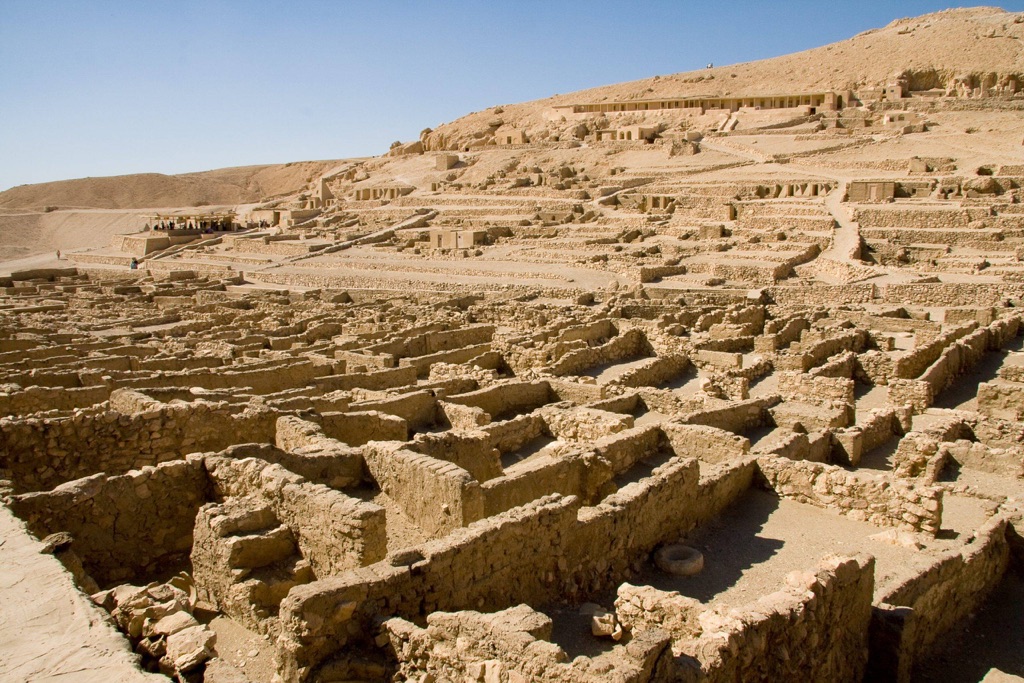Deir el-Medina, a unique historical site, is nestled in the rugged hills on the west bank of the Nile, opposite modern-day Luxor, Egypt. This ancient village, once home to the artisans who worked on the tombs in the Valley of the Kings, offers a fascinating glimpse into the daily lives of the people who contributed to the creation of some of Egypt’s most magnificent monuments.
Get your dose of History via Email
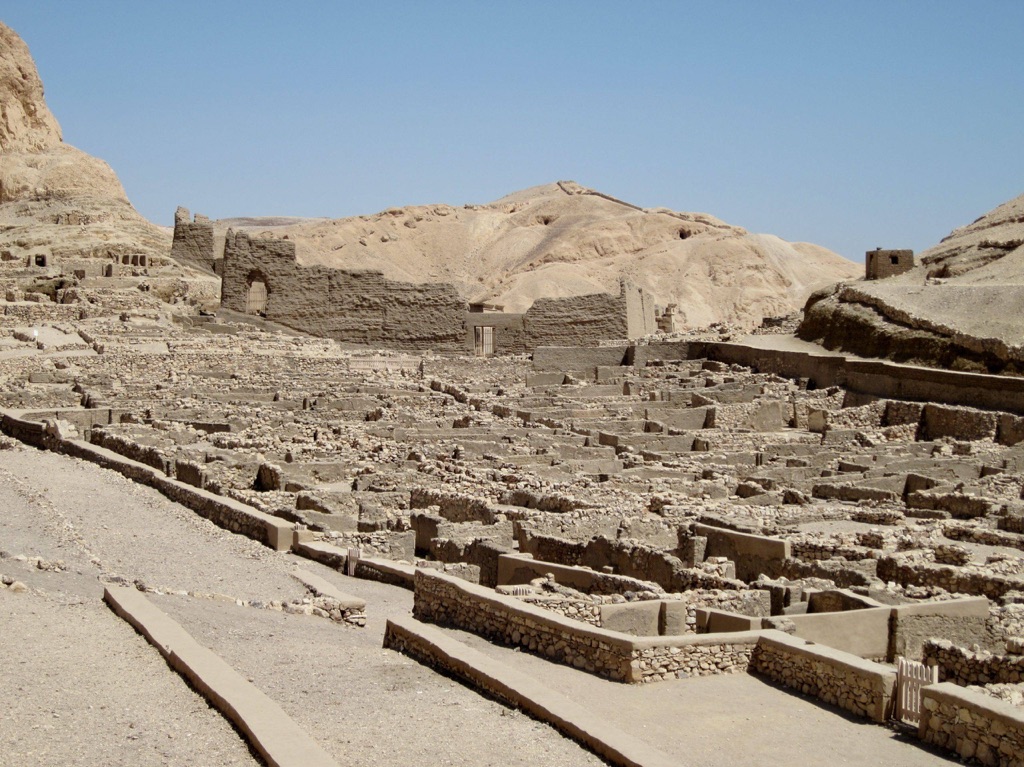
Historical Background
Deir el-Medina, also known as the “Village of the Workers,” was established during the reign of Pharaoh Amenhotep I and his mother, Queen Ahmose-Nefertari, around 1550 BC. The village was inhabited for almost 500 years, during the New Kingdom period, by generations of skilled artisans and laborers who worked on the royal tombs in the nearby Valley of the Kings and Valley of the Queens. These workers were highly respected and lived in relative comfort, their lives and community well-documented through a wealth of written records and artifacts.
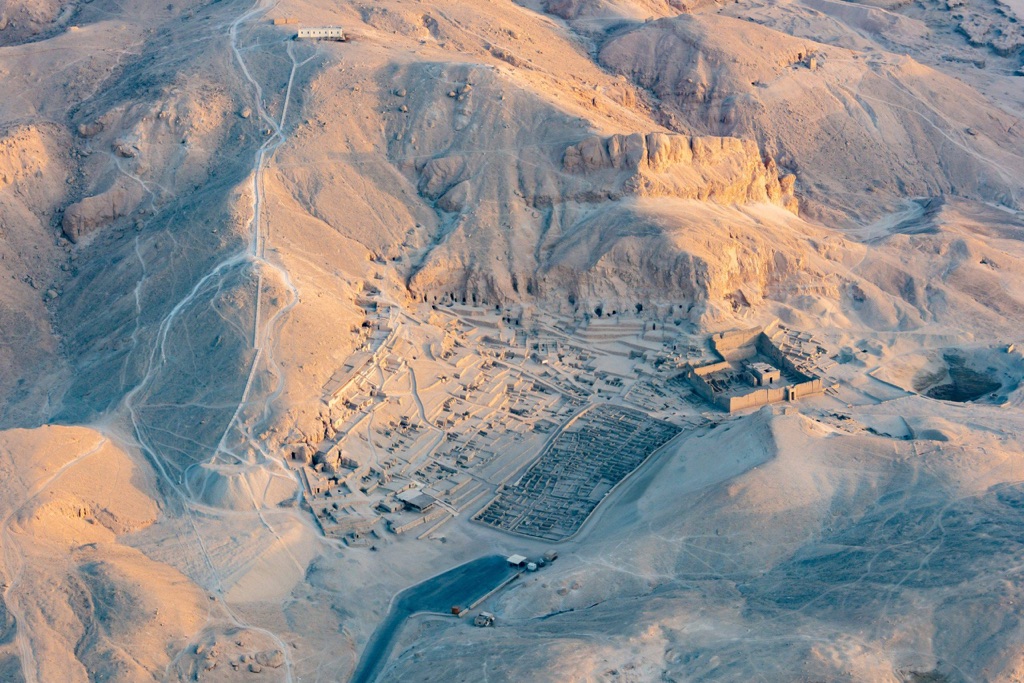
Architectural Highlights
The village of Deir el-Medina was meticulously planned, with small, uniform houses arranged along a main street. Each house, built of mudbrick, typically consisted of four or five rooms, including a kitchen, bedrooms, and a central hall. Some houses even had simple bathrooms and underground cellars. The village also boasted a temple, dedicated to the deified Amenhotep I and his mother, and a necropolis with beautifully decorated tombs belonging to the villagers themselves. The construction methods and materials used reflect the workers’ intimate knowledge of their craft, and the village layout provides valuable insights into the social organization of the time.
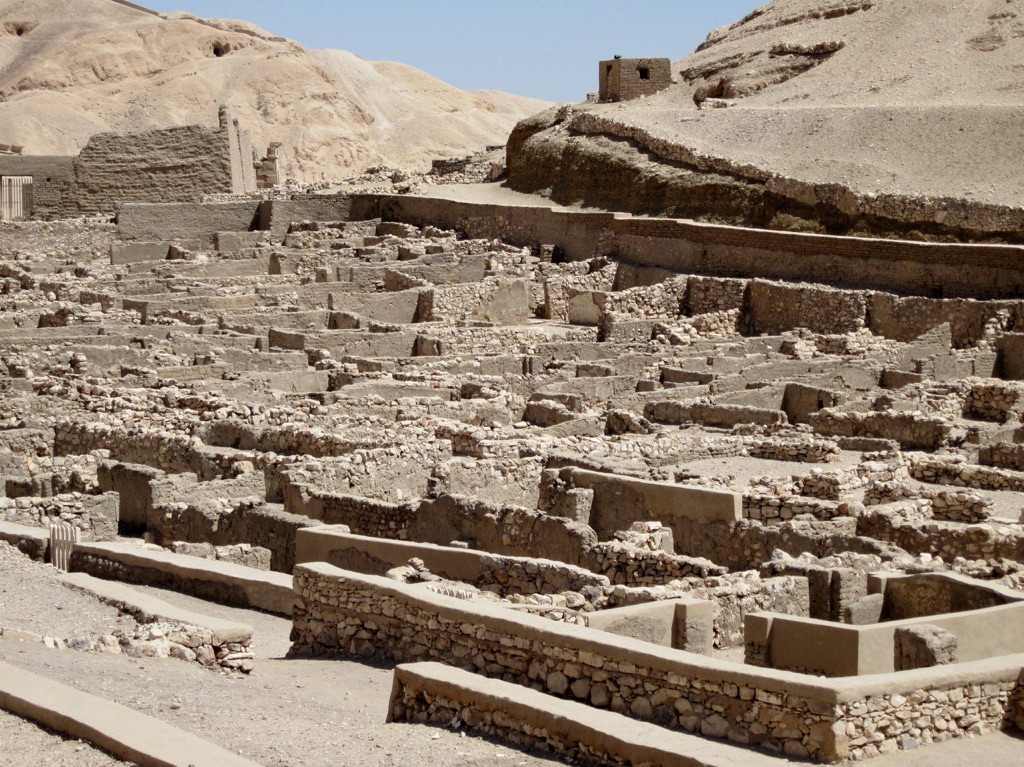
Theories and Interpretations
Deir el-Medina is unique in that it provides a detailed record of non-royal life in ancient Egypt. The vast amount of ostraca (flakes of limestone or pottery used as a writing surface) found at the site has provided scholars with invaluable information about the villagers’ daily lives, religious beliefs, and even legal disputes. The workers’ tombs, although smaller than the royal tombs they constructed, are richly decorated with scenes of daily life and the afterlife, offering further insights into their beliefs and aspirations. The dating of the site has been achieved through the analysis of these written records, as well as through traditional archaeological methods.
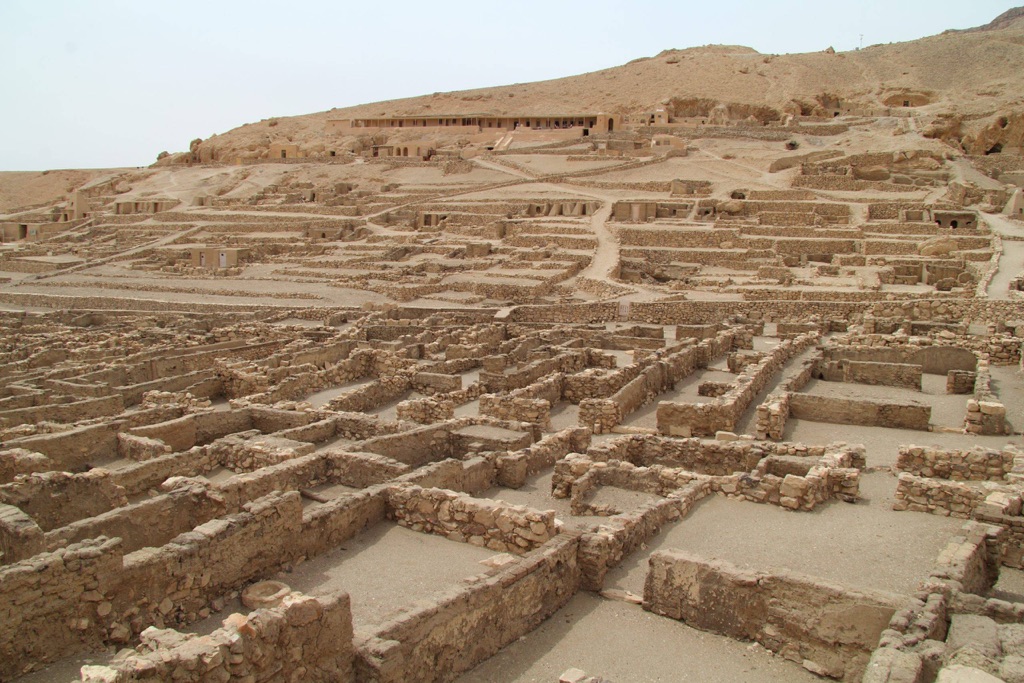
Good to know/Additional Information
Deir el-Medina is also known for its “workmen’s graffiti,” which adorns the surrounding hills. These informal inscriptions, often overlooked in favor of the more formal tomb decorations, provide a unique, personal perspective on the lives of the workers. The site also features a small, but well-preserved Ptolemaic temple, which was built over the original New Kingdom temple and is dedicated to the goddess Hathor and the deified Amenhotep I. Visiting Deir el-Medina offers a unique opportunity to step back in time and walk the same streets as the ancient artisans who helped shape Egypt’s magnificent legacy.

For further reading and information, refer to the following sources:
If you like this article, you should definitely give these a read:

